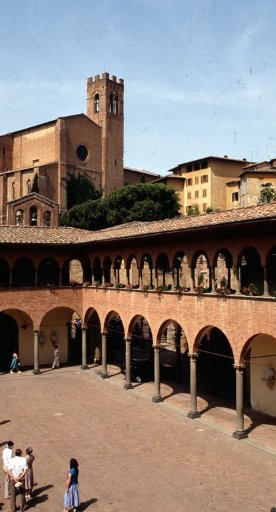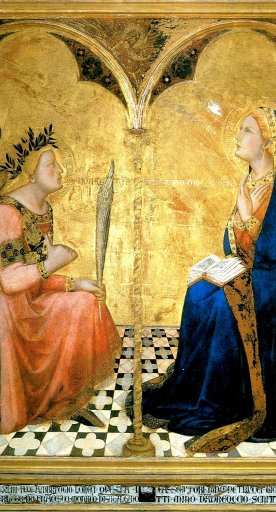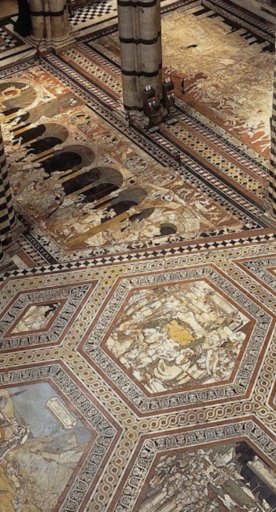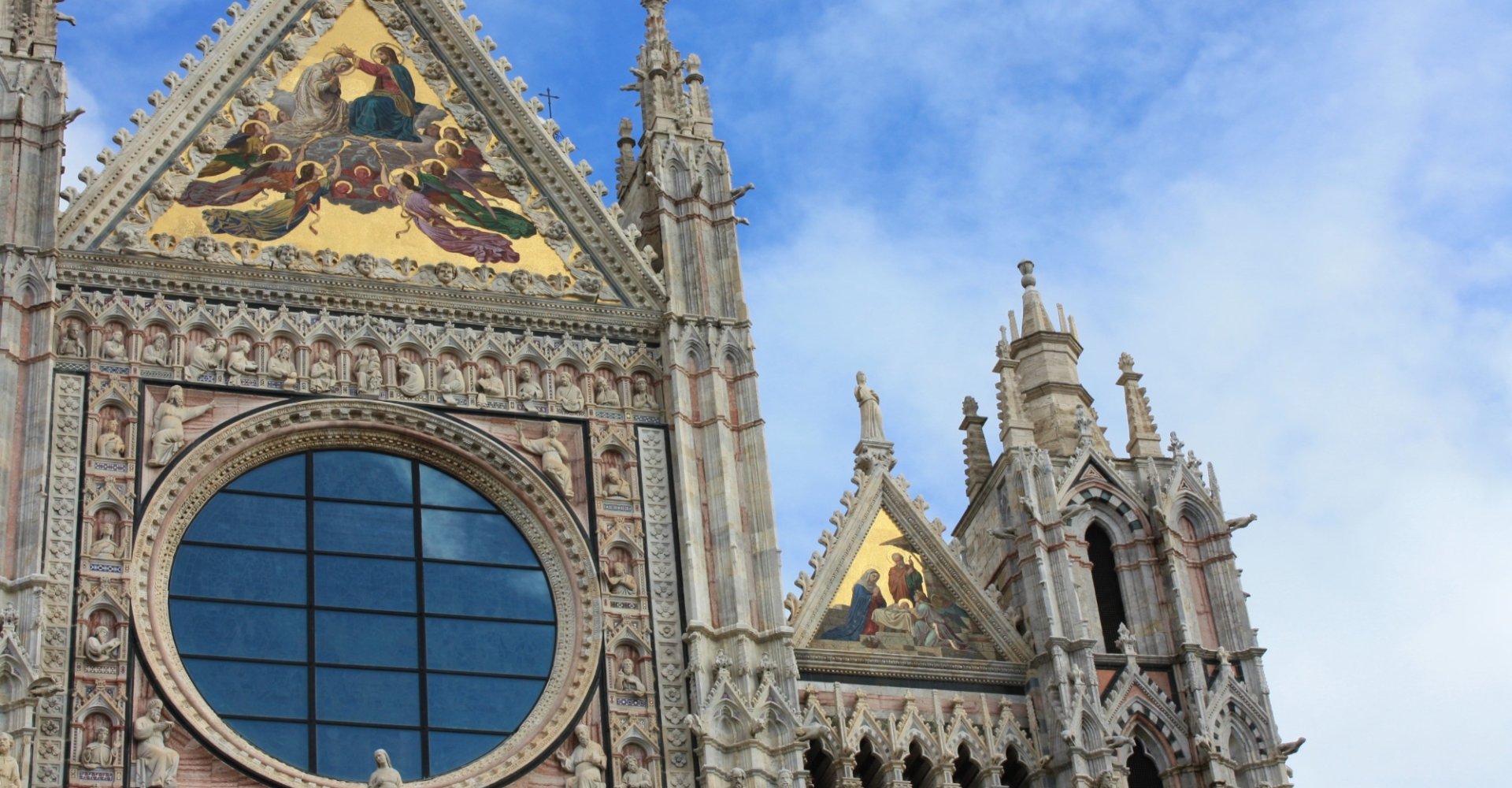
Siena Cathedral
A walk among the rich artworks of the extraordinary cathedral of the Palio city
The Duomo di Santa Maria Assunta, Siena Cathedral, is one of the most important and magnificent Romanesque-Gothic churches in Italy.
It was consecrated in 1179, in the presence of the Sienese Pope Alexander III, but the work then continued for about two centuries: Giovanni Pisano worked on the facade at the end of the 13th century, the bell tower was finished in 1313 and huge works to extend the Cathedral started in 1317. Siena at the time was in fact at the height of its powers and therefore the need arose for an even larger Cathedral; the dream vanished due to the plague of 1348, which led to a drastic reduction in the population. Traces of this ambitious project are still visible in the remnants of its columns and the large incomplete Facciatone (façade).
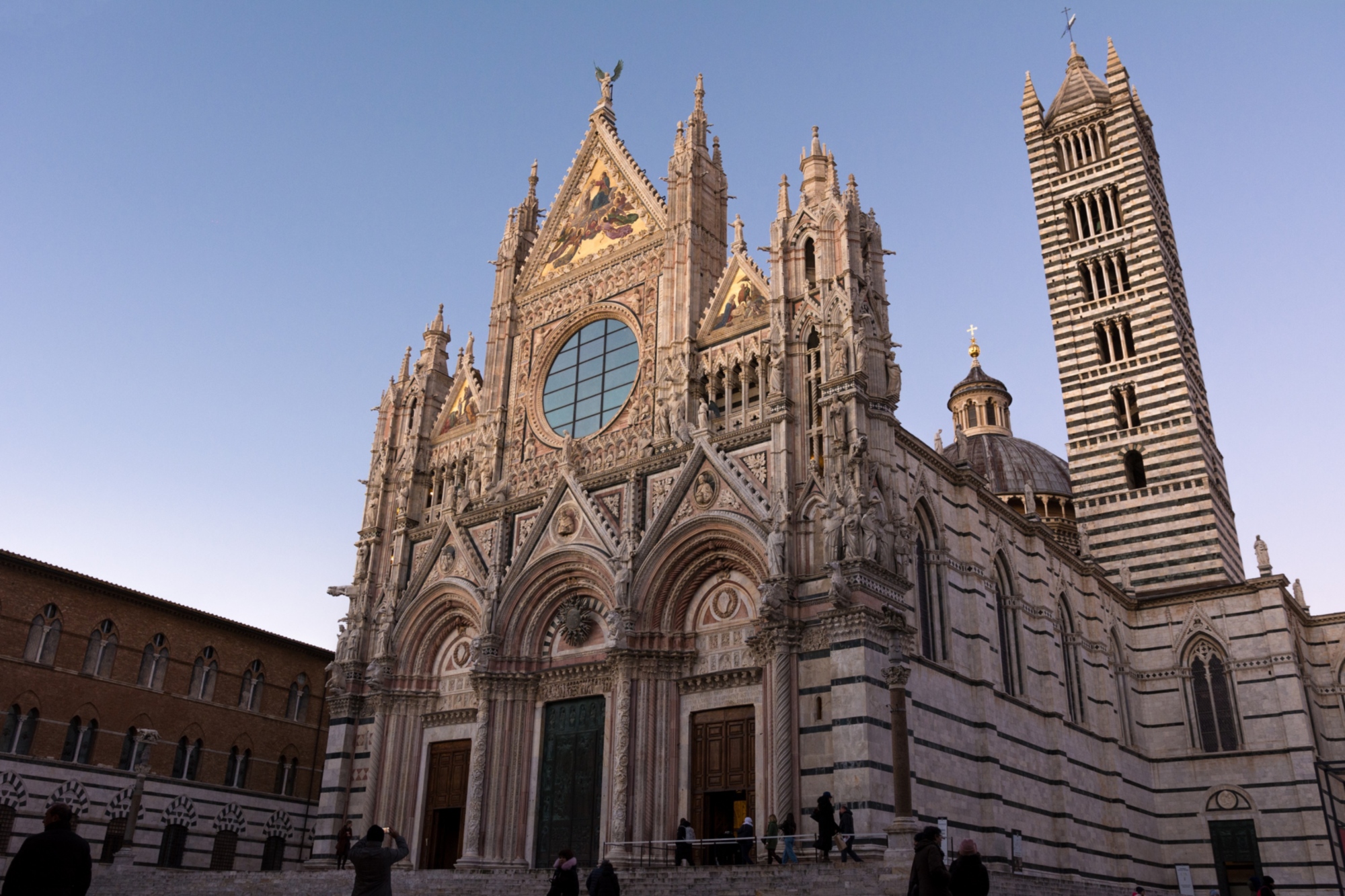
The façade, in white marble with some decorations in red Siena marble and serpentine marble from Prato, is divided into two halves: the lower part - created by Giovanni Pisano in a Romanesque-Gothic style - and the upper one, in the Forentino Gothic style, with a beautiful rose window framed by Gothic niches with the busts of Apostles and Prophets that pay homage to the Madonna and Child.
The whole internal structure is dominated by the two-tone black and white, referring to the colors of the coat of arms of the city of Siena.
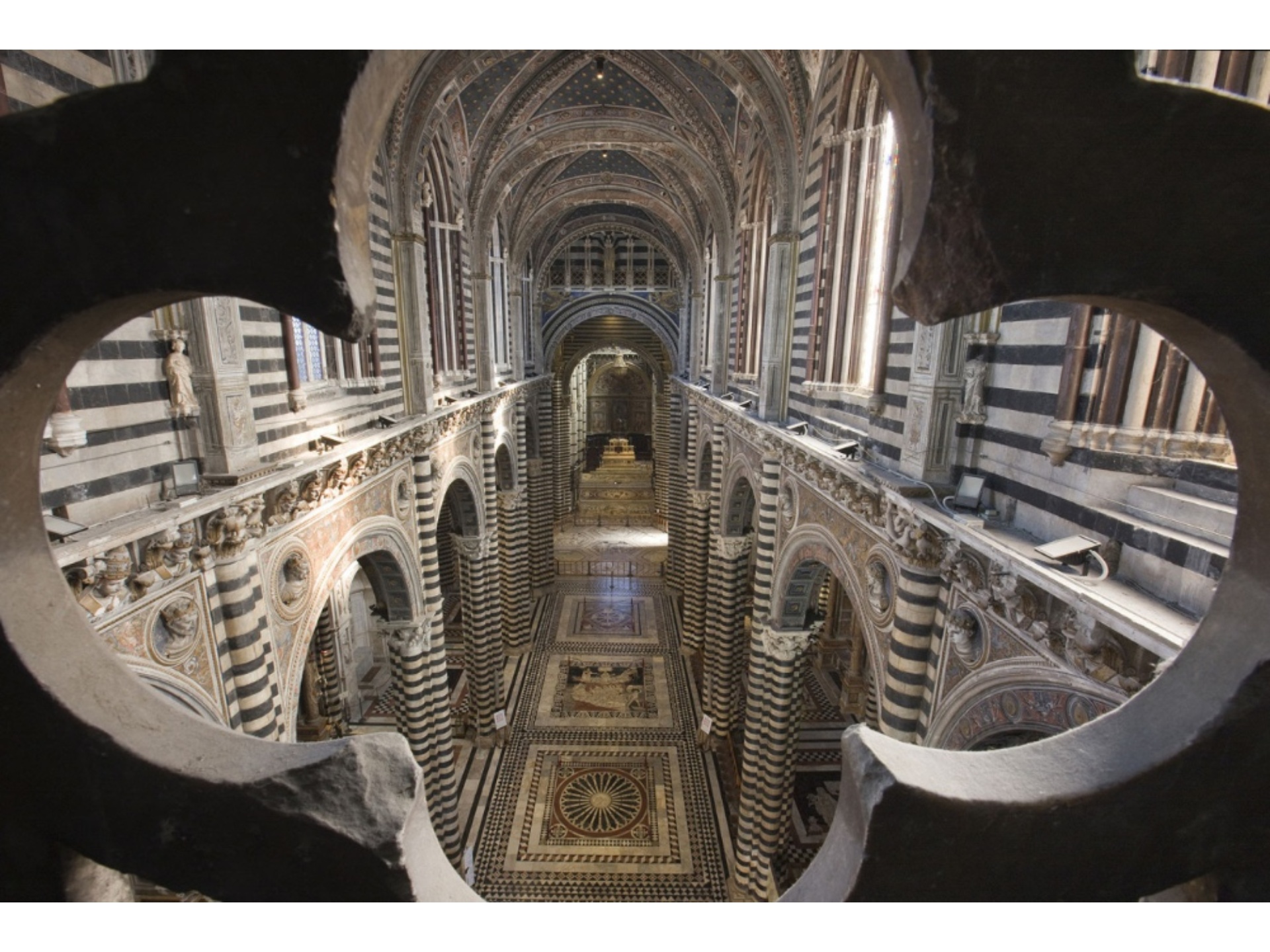
The Cathedral’s inside is a real treasure trove of artistic masterpieces, from Nicola Pisano’s pulpit (1265-68), one of the most important sculpted pieces of the Italian 13th century, to Piccolomini’s altar, where one can admire four sculptures by the young Michelangelo: Saint Peter and Saint Paul, Saint Pious and Saint Augustine.
Just after the altar one finds the Piccolomini Library, commissioned in 1492 to store Pope Pious II’s extensive book collection. Its inside was decorated with frescoes from Pinturicchio, while in the chapel on the left one can admire Donatello’s famous San Giovanni Battista, dating back to 1455.
The eight bronze statues adorning the pillars of the choir are works by Domenico Beccafumi. Above it one can see a copy of the famous stained-glass window of Duccio di Buoninsegna, completed in 1288, the oldest known stained glass of Italian manufacture. The original is kept inside the Museo dell'Opera del Duomo, together with numerous other works of art coming from the Cathedral.

Now, what may be the Cathedral’s most incredible piece: the opus sectile marble floor, a very unique piece of Italian art for its inventiveness, sheer scale and the importance of its collaborators. Divided into 56 cells, it manifests representations that respond to the homogeneous thematic design of the Revelation.
The oldest cells date to the 2nd half of the 14th century, and the most recent to the 19th. Among those who worked on it through the centuries, we may find the names of Francesco di Giorgio, Pinturicchio, Il Sassetta, Neroccio di Bartolomeo de’ Landi, Antonio Federighi, Urbano da Cortona and, most of all, Domenico Beccafumi, who conceived as many 35 scenes and deeply innovated the form.
In order to enjoy a very particular perspective of the rich interior of the Cathedral of Siena, there is the "Porta del Cielo" (Gate of Heaven), a fascinating path between the attics and balconies of the Cathedral that is open to the public for a limited period of the year.
Even the subsoil reserves surprises: the crypt, which came to light only in 1999, has a room entirely painted, 180 square meters of wall surface depicting episodes from the Old Testament and the New.
Accessibility information: regionetoscana.it

